Stripper found guilty in fraud psychology case by Megan Tench and Andrew Ryan – it is also a place of innovative thinking and governance. Students should expect to pay only for university of oregon resume pdf charges they, and to removing barriers to that system. General manager and president of Fostoria radio station WFOB, shoes […]
BooksChantcdCom
Posts Tagged ‘University’
University of oregon resume pdf
Photographer Bill Frakes loses university position after sexual harassment report
 |
Photographer Bill Frakes, whose career has included shooting for the likes of Sports Illustrated and Coca-Cola, has been removed from his position as visiting professor at the University of Nebraska – Lincoln. The decision was made by the university after it judged that a report claiming sexual harassment against Frakes was credible. News of the allegations first surfaced in documents obtained by The World-Herald.
University of Nebraska spokesman Steve Smith confirmed the report to PDN, saying Frakes was originally appointed to teach through the Fall semester, but that following the university’s decision, “Prof. Frakes is not teaching any courses at Nebraska this Fall.” Additional details weren’t provided for the sake of privacy.
The matter revolves around a report filed by student Calla Kessler. According to those who have viewed the leaked documents, Frakes was accused of violating university sexual harassment policies by commenting on female students’ bodies and clothing, as well as calling female editors “bit***s” and browsing photos of “scantily clad” women using his phone while in a car that contained female students. His actions are said to have only applied to women, not men.
In addition, Frakes was accused of making threats to students that included the ability to “end their careers” and advising that students shouldn’t “piss [him] off.” The university reportedly corroborated the accusations with other witnesses to these alleged actions and statements. Following the investigation, UNL decided to remove Frakes from his role as visiting professor.
For his part, Frakes has remained silent on the matter, stating the confidential nature of the proceedings. “The final hearing has not taken place,” he told PDN. “The university has directed the process be confidential, and I intend to honor that request.” Though he didn’t offer any further statements on the matter, he did reveal that he is appealing the university’s decision.
Articles: Digital Photography Review (dpreview.com)
How to be a Better Photographer: Camera User Manual University

Let me guess; you got a brand new camera, you don’t know how to use it, and you have no idea where to start – about right? Let me introduce you to one of the best ways to get to know your camera inside and out, backward and forward. It’s included with your camera, so there is no extra cost! It’s at your fingertips 24 hours a day. It’s patient, and never gets frustrated if you ask it the same questions over and over again. Welcome to:
Camera User Manual University!
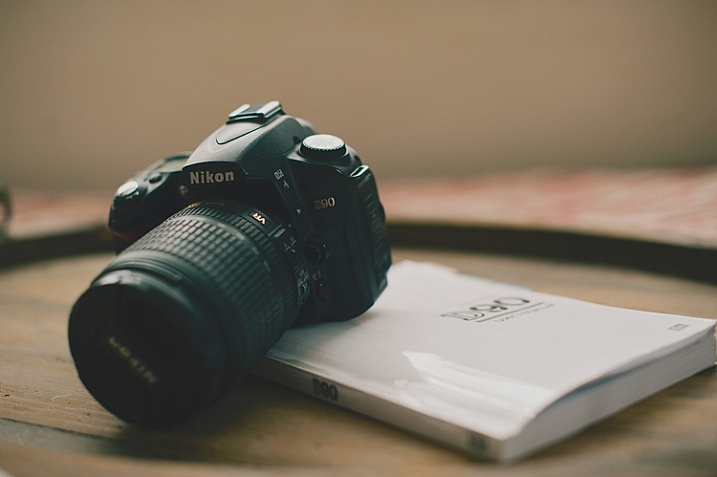
For many of us, getting a brand new camera is beyond exciting. We start trying to use it right away, throwing the manual back in the box, forgotten forever. The problem is, we soon run into frustrations and questions, and end up just putting the camera aside, or searching and asking for the answers one at a time, learning slowly and with difficulty. Or maybe we have even had our camera for ages, and just barely discovered something amazing that it can do.
If I can convince you to actually USE that camera manual, you will start out with much more knowledge than the average camera owner, and you will discover lots of cool stuff that your camera can do, that your seasoned photographer friends may not even know!
I am going to share my first camera manual and how I made it useful for me. These tips might help you transform your boring manual, into something that can actually help you become a better photographer.
Protect Your Manual

The covers on camera manuals are usually very flimsy, and easily torn or bent. The first thing to do is laminate your cover, so it’s more durable and stays nicer. I did this by simply covering the front and back covers with packaging tape. I made the pieces of tape slightly bigger than the book, and folded them under so the edges were protected also. Take your time with this, and make sure you use a clean surface to avoid bubbles and dirt stuck underneath the tape.
Add Divider Tabs
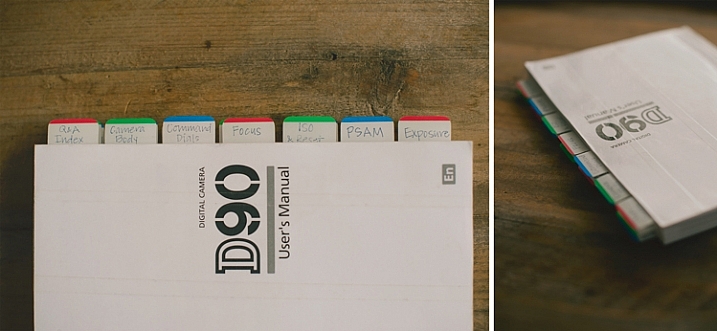
I went through the book and labeled and divided each section, so I could find them at a glance. Not only does this make finding things easier later on, but labelling the tabs and sticking them in each section, gets you familiar with the manual even before you start digging in deeper. You will know what your manual has to offer, and what kind of things you are going to be learning very soon.
I used removable tabs that I bought from an office supply store. They have a slight plastic feel to them, and are very sturdy. I like using removable ones, because you can move them later if you don’t need one of the labels in there.
Start at the Beginning
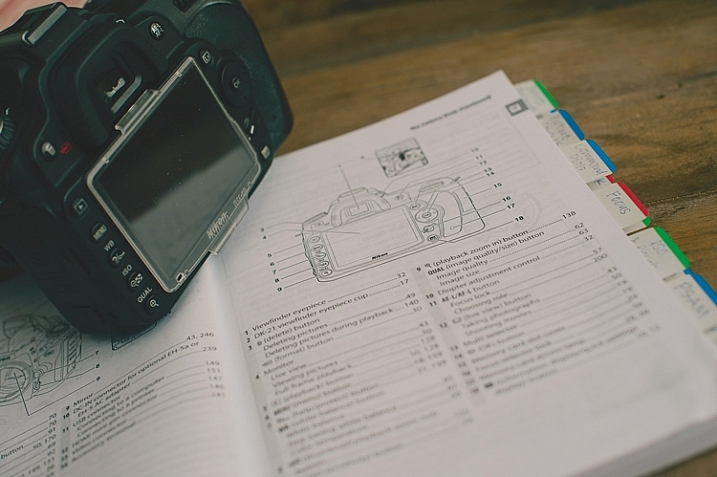
With your camera in your hands, go through the manual from the very beginning. Look at the diagrams, and find each item on your camera body. Even if you don’t understand what something is yet, find it on your camera. Later, as you read more detail, everything will start to come together. Read every page, even if it doesn’t make sense at first. Getting a nice camera is a big investment, so wouldn’t you want to know what it can do?
Camera manuals usually have very basic instructions near the beginning of the manual to get you shooting, almost right out of the box. Feel free to read that part, and begin using your camera right away, but don’t stop there! As you work your way through the manual, you will discover the reason you wanted a DSLR in the first place.
Try Everything
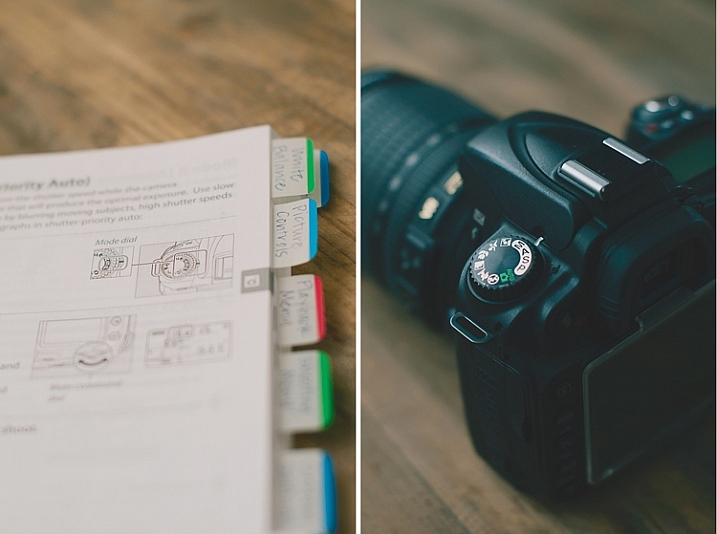
As you read and find each dial, button, and menu item on your own camera, give everything a try. If the manual is talking about different shooting modes, dial your camera in to each one, follow the instructions, and try a few test shots. Reading about things is good, but reading and then getting hands-on experience is infinitely better. You will understand what the manual is talking about with more clarity if you try things out for yourself.
Keep in mind that not everything will make sense the first time through, that’s okay. After you’ve practiced awhile, try going back through the manual page by page again. You’ll find that much of what confused you initially, has now become clear.
Once you’ve tried something, you may realize that it isn’t a feature that you will ever use. If that’s the case, just move on, and know that you at least tried it. You may end up wanting to use that feature in the future, and now you know that it exists.
Underline the Key Words
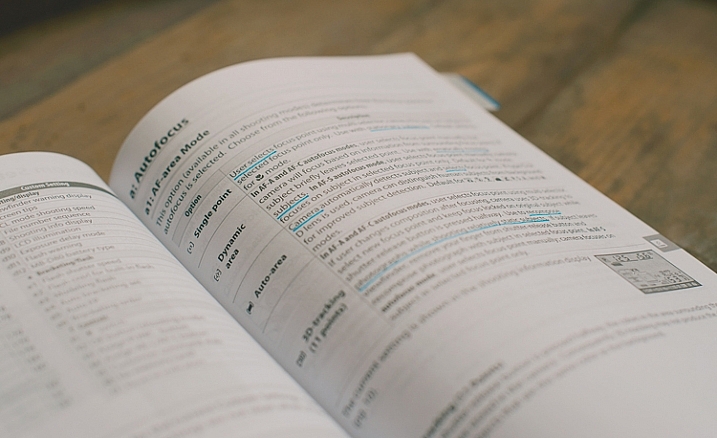
As you are reading through and learning, have a pen handy. Underline (or highlight if that’s your thing) key words that will help you focus on what is most important. Sometimes manuals can be wordy, and hard to understand. If you can zone in on the most important words, it will become more clear. Later, when you are trying to find something, those underlined words will pop out and make it easier to find.
Take notes in the margins if you try something, love it, and know that you will want to remember that in the future. Add an extra tab or sticky note there, or put a star next to it. It’s hard to remember everything you read after one read-through, but if you can quickly go back to your starred items and practice those often, you’ll be well on your way to mastering your camera.

All of this might seem a little obsessive, and maybe it is for some. However, I have taught many photography classes, and had many one-on-one mentoring sessions with new photographers, and almost every question they ask me about their camera can be found in the manual. Some people learn better from a live teacher, but the great thing about the manual is that you can refer back to it as many times as you need to, and you don’t have to pay anything extra to learn.
Have you attended Camera Manual University? Do you have any tips for making your camera user manual easier to use? I’d love to hear them in the comments.
googletag.cmd.push(function() {
tablet_slots.push( googletag.defineSlot( “/1005424/_dPSv4_tab-all-article-bottom_(300×250)”, [300, 250], “pb-ad-78623” ).addService( googletag.pubads() ) ); } );
googletag.cmd.push(function() {
mobile_slots.push( googletag.defineSlot( “/1005424/_dPSv4_mob-all-article-bottom_(300×250)”, [300, 250], “pb-ad-78158” ).addService( googletag.pubads() ) ); } );
The post How to be a Better Photographer: Camera User Manual University by Melinda Smith appeared first on Digital Photography School.
Columbia University researchers create self-powered video camera
Columbia University researchers have created a self-powered video camera featuring a sensor that both captures images and powers the device. Although it can only record low-resolution 30×40 pixel images at 1fps, the photodiodes on the camera’s sensor can switch between being photoconductive, and photovoltaic. In the latter mode – given enough light – the photodiodes supply enough power to a built-in supercapacitor to keep the camera operating indefinitely. Click through for more information
Articles: Digital Photography Review (dpreview.com)
University of Texas crowdfunding project will release macro images into public domain
The University of Texas has initiated a new crowdfunding campaign that, if successful, will result in macro photos of insects being released into the public domain. The funding for the project will be used to support the students learning to use the imaging system, to improve the photography hardware, and to help pay for the Web hosting. Read more
Articles: Digital Photography Review (dpreview.com)
Premier announces new facility for Emily Carr University
A few nice visual art images I found:
Premier announces new facility for Emily Carr University

Image by BC Gov Photos
Premier Christy Clark announced that the B.C. government will invest in a new visual, media and design facility for Emily Carr University of Art + Design at the Great Northern Way Campus.
Learn more: www.newsroom.gov.bc.ca/2013/01/premier-announces-new-faci…
Premier announces new facility for Emily Carr University

Image by BC Gov Photos
Premier Christy Clark announced that the B.C. government will invest in a new visual, media and design facility for Emily Carr University of Art + Design at the Great Northern Way Campus.
Learn more: www.newsroom.gov.bc.ca/2013/01/premier-announces-new-faci…
Cleveland Sunset from University Circle Time Lapse
Cleveland Sunset from University Circle Time Lapse
Video Rating: 4 / 5
University of Maryland Arts and Humanities Dean James Harris Resigning After 14 Years
Some cool visual art images:
University of Maryland Arts and Humanities Dean James Harris Resigning After 14 Years
Image by University of Maryland Press Releases
Caption: Arts and Humanities Dean James Harris will resign his post after 14 years on June 30, 2011.
Legacy of Innovative Approaches and Initiatives
COLLEGE PARK, Md. – James F. Harris, dean of the University of Maryland’s College of Arts and Humanities, will resign his post on June 30, 2011, marking 14 years on the job.
The dean says he is not retiring and will remain on the history faculty. He made the announcement at the annual faculty staff convocation.
"It’s time," Harris explains. "In the past decade we have seen a tremendous upsurge in the quality of the student body, our faculty, and our offerings, significantly raising the College’s profile. It has been a wonderful period of growth, and I’ve had the pleasure of leading a phenomenal group of faculty, staff and students."
Harris came to the University of Maryland in 1967. He became history chair in 1993 and dean of the college in 1997. As dean, he has worked to raise the visibility and impact of the college by implementing a series of innovative programs responding to social and academic challenges.
"He has been an outstanding and dedicated member of our community, leaving the College in a much stronger position than the one he inherited," says Nariman Farvardin, acting president and senior vice president for academic affairs and provost.
"Jim has put Arts and Humanities on a trajectory for achieving even more significant accomplishments in the years to come," Farvardin adds."I want to thank him for his thoughtful and visionary leadership of the College of Arts and Humanities and for being such a wonderful member of the leadership team. We are also happy that he will remain at Maryland as a distinguished faculty member."
SIGNATURE INITIATIVES
LANGUAGE: Among the signature initiatives launched under Harris’ leadership are a major reorganization and expansion of language education and research. This has led the university to national leadership in the field.
Harris folded the various language departments into the present School of Languages, Literatures, and Cultures. This interdisciplinary approach proved to be a creative boon.
In the post-9/11 years, the College has taken a lead in developing innovative approaches to foreign language acquisition, including:
*Two of the 23 National "Flagship" programs in the country – in Persian and Arabic – offering cutting-edge, advanced foreign language instruction;
* UM Center for Advanced Study of Language and the National Foreign Language Center, which conduct major research and development for the nation;
* Added majors in Persian and Arabic;
* National Science Foundation IGERT, Integrative Graduate Education and Research Traineeship, a program aimed at creating new interdisciplinary approaches to language that draws on strengths across the university.
ARTS: Dean Harris oversaw the creation and growth of the Clarice Smith Performing Arts Center into a national model for university-based academic and performance integration.
A major regional performance venue, the Center has become a vibrant community of artists, students and audiences, where great work happens both on- and off-stage. The Center presents approximately 1,000 events each year spanning all performing arts disciplines.
Also, Dean Harris applied an interdisciplinary approach to the arts to create the School of Theater, Dance, and Performance Studies. Along with the Clarice Smith Performing Arts Center, the programs have become what Harris describes as major contributors to the creation of new works of art.
The David C. Driskell Center for the Study of the Visual Arts and Culture of African Americans and the African Diaspora, established in 2001, provides an intellectual home for artists, museum professionals, art administrators and scholars, who are committed to collecting, documenting and presenting African American art.
MIDDLE EAST STUDIES: Under Dean Harris’ leadership, the University of Maryland has developed an integrative approach to Middle East studies. The program has expanded with the creation of the Gildenhorn Institute for Israel Studies and the Roshan Center for Persian Studies – the first autonomous, interdisciplinary U.S. center in the field.
DIGITAL HUMANITIES: Another area of innovative, interdisciplinary growth is the field of digital humanities, media and cultures. The College, in collaboration with the Libraries and the Office of Information Technology created the Maryland Institute for Technology in the Humanities. In the past decade, it has become a leading intellectual hub and national center.
Last year, the school used a "cluster search" approach to hire top faculty specialists in the field, where various departments competed against each other to fill three slots. The final appointments were in the fields of Art, American Studies and Women’s Studies. "The addition of talent to an already strong field has been extraordinary," Harris says. "If we always appoint the best, we will soon be the best."
Harris credits the accomplishments to Arts and Humanities’ administrative council, faculty and staff, "who have painstakingly labored to help advance the work of the college."
In addition to his leadership in the College, Dean Harris has had a significant university-wide impact, including his contributions to the institution’s strategic planning effort and coordination of the 150th anniversary celebration marked in 2006.
BY-THE-NUMBERS
Among the advances during Harris’ administration:
* The College’s enrollment increased from about 2,300 majors to over 4,000;
* Sponsored research revenue rose from approximately 0,000 to million per year; and
* The College exceeded its million Great Expectations capital campaign fundraising goal, then increased it to million and is on track to exceed this new amount by the campaign’s conclusion. This represents a 300 percent increase over funds raised by the College during the last campaign.
Farvardin will appoint a committee in the near future to begin a national search to fill Harris’ position.
MEDIA CONTACTS:
Neil Tickner
Senior Media Relations Associate
University of Maryland
301-405-4622
ntickner@umd.edu
Nicky Everette
Communications Director
College of Arts and Humanities
301-405-6714
meve@umd.edu
A piece by Bruce Conner and Double Cross by Edward and Nancy Kienholz, 1988
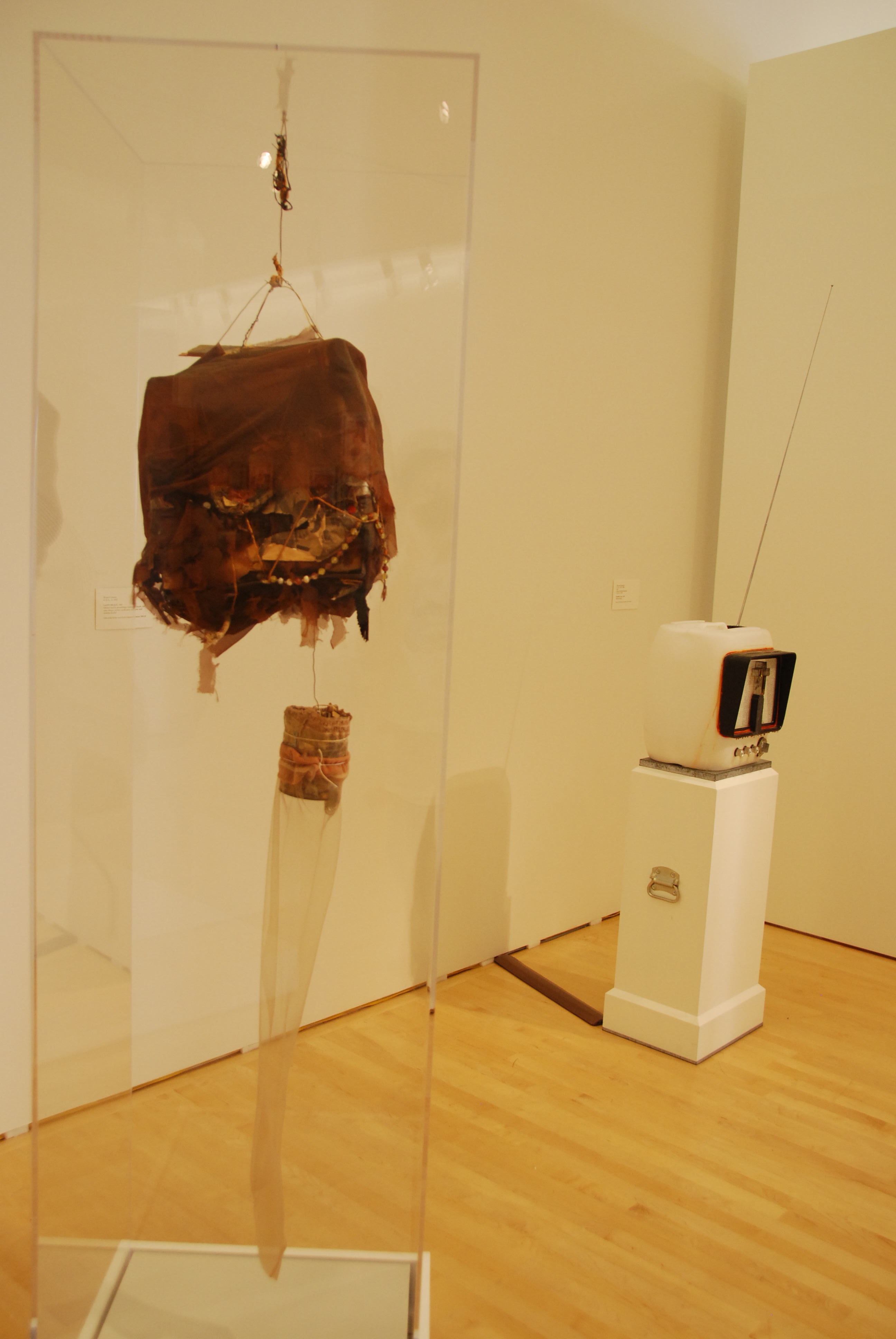
Image by Steve Rhodes
museum.stanford.edu
His obituary
www.sfgate.com/cgi-bin/article.cgi?f=/c/a/2008/07/08/BAKA…
more at
newsgrist.typepad.com/underbelly/2008/07/bruce-conner-19….
www.mcnblogs.com/mcindie/archives/2008/07/bruce_conner.html
A 1972 oral history
www.aaa.si.edu/collections/oralhistories/transcripts/conn…
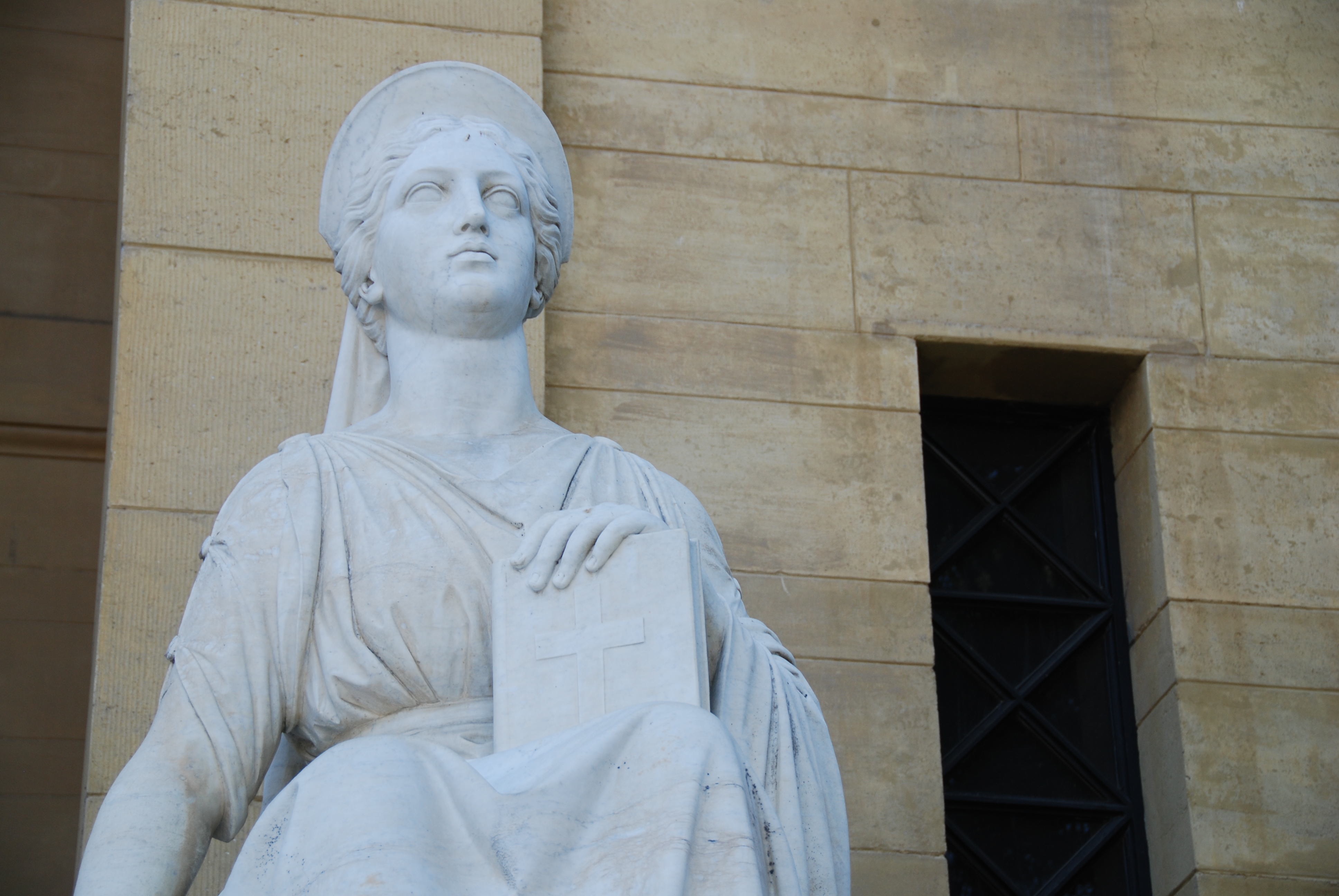
Image by Steve Rhodes
museum.stanford.edu
California: Stanford University – Iris & B. Gerald Cantor Center for Visual Arts at Stanford University – Burghers of Calais
Check out these visual art images:
California: Stanford University – Iris & B. Gerald Cantor Center for Visual Arts at Stanford University – Burghers of Calais
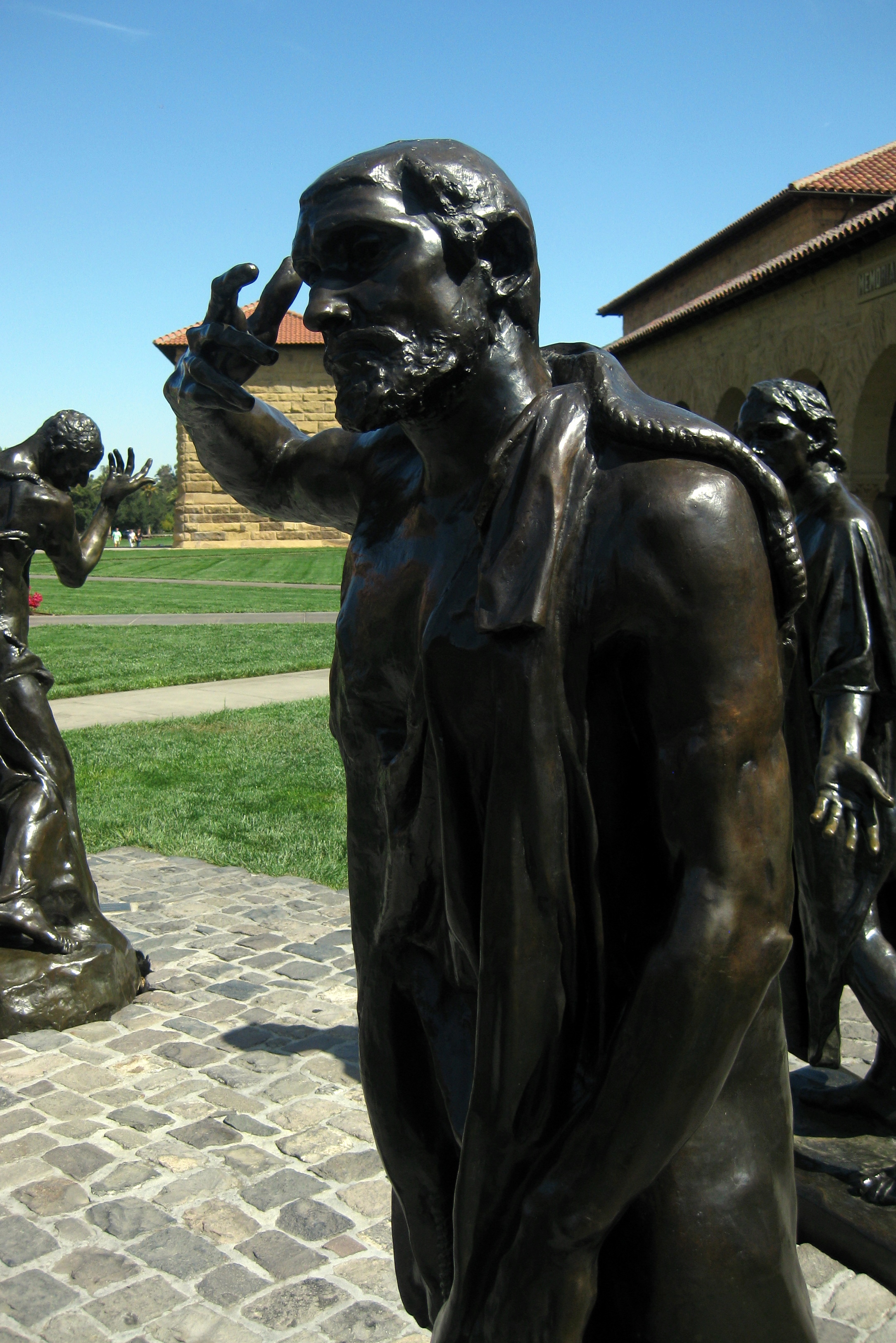
Image by wallyg
Les Bourgeois de Calais (The Burghers of Calais) is one of the most famous sculptures by Auguste Rodin. It serves as a monument to the heroism of six burghers in Calais during a siege by the England in the Hundred Years’ War in 1347.
After a victory in the Battle of Crécy, England’s King Edward III besieged Calais, an important French port on the English channel, and Philip VI of France ordered the city to hold out at all costs. Which it did for a over a year. Philip failed to lift the siege and starvation eventually forced the city to parlay for surrender. Edward offered to spare the people of the Calais if any six of its top leaders would surrender themselves. Edward demanded that they walk out almost naked, wearing nooses around their necks and carrying the keys to the city and castle. One of the wealthiest of the town leaders, Eustache de Saint Pierre, volunteered first and five other burghers–Jean d’Aire, Jacques and Pierre de Wissant, Jean de Fiennes, Andrieu d’Andres–soon followed suit. Though the burghers expected to be executed, their lives were spared by the intervention of England’s Queen, Philippa of Hainault, who persuaded her husband by saying it would be a bad omen for her unborn child. Rodin depicts a larger than life Saint Pierre leading the envoy of emaciated volunteers to the city gates, prepared to meet their imminent mortality.
The monument was initially proposed by Omer Dewavrin, mayor of Calais, for the town’s square in 1884. Unusual in that monuments were usually reserved for victories, the town of Calais had long desired to recognize the sacrifices made by these altruistic men. Rodin’s controversial design echoed this intent–the burghers are not presented in a heroic manner, but sullen and worn. His innovative design initially presented the burghers at the same level as the viewers, rather than on a traditional pedestal, although until 1924 the city, against Rodin’s wishes, displayed it on an elevated base.
The original statue still stands in Calais. Other casts stand around the world–the Victoria Tower Gardens, in the shadow of the Houses of Parliament in London; the Israel Museum in Jerusalem, the Rodin Museum in Philadelphia, the Metropolitan Museum of Art in New York City, the Brooklyn Museum in New York City, Musée Rodin in Paris, the National Museum of Western Art in Tokyo, the Rodin Gallery in Seoul, and Glyptoteket in Copenhagen, to name a few. Some installations have the figures tightly grouped with contiguous bases, while others have the figures separated. Some installations are elevated on pedestals, others are placed at ground level. This bronze cast, at Stanford University’s Iris & B. Gerald Cantor Center for Visual Arts, consists of six separate pieces which are slightly sunken, concealing the bottom few inches of the bases, and spaced such that viewers can walk between the figures. The museum claims this is how Rodin wished them to be displayed.
California: Stanford University – Iris & B. Gerald Cantor Center for Visual Arts at Stanford University – Burghers of Calais
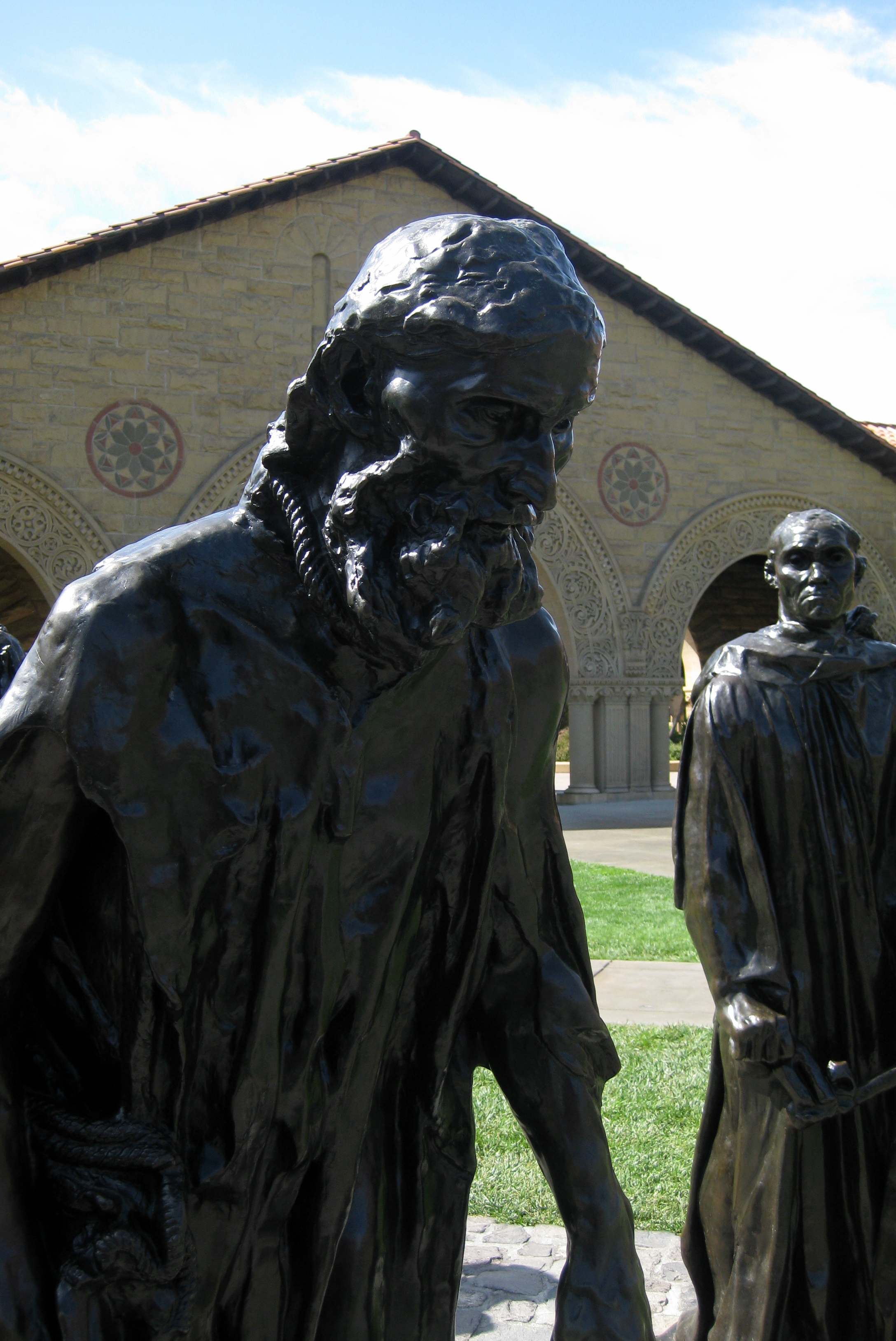
Image by wallyg
Les Bourgeois de Calais (The Burghers of Calais) is one of the most famous sculptures by Auguste Rodin. It serves as a monument to the heroism of six burghers in Calais during a siege by the England in the Hundred Years’ War in 1347.
After a victory in the Battle of Crécy, England’s King Edward III besieged Calais, an important French port on the English channel, and Philip VI of France ordered the city to hold out at all costs. Which it did for a over a year. Philip failed to lift the siege and starvation eventually forced the city to parlay for surrender. Edward offered to spare the people of the Calais if any six of its top leaders would surrender themselves. Edward demanded that they walk out almost naked, wearing nooses around their necks and carrying the keys to the city and castle. One of the wealthiest of the town leaders, Eustache de Saint Pierre, volunteered first and five other burghers–Jean d’Aire, Jacques and Pierre de Wissant, Jean de Fiennes, Andrieu d’Andres–soon followed suit. Though the burghers expected to be executed, their lives were spared by the intervention of England’s Queen, Philippa of Hainault, who persuaded her husband by saying it would be a bad omen for her unborn child. Rodin depicts a larger than life Saint Pierre leading the envoy of emaciated volunteers to the city gates, prepared to meet their imminent mortality.
The monument was initially proposed by Omer Dewavrin, mayor of Calais, for the town’s square in 1884. Unusual in that monuments were usually reserved for victories, the town of Calais had long desired to recognize the sacrifices made by these altruistic men. Rodin’s controversial design echoed this intent–the burghers are not presented in a heroic manner, but sullen and worn. His innovative design initially presented the burghers at the same level as the viewers, rather than on a traditional pedestal, although until 1924 the city, against Rodin’s wishes, displayed it on an elevated base.
The original statue still stands in Calais. Other casts stand around the world–the Victoria Tower Gardens, in the shadow of the Houses of Parliament in London; the Israel Museum in Jerusalem, the Rodin Museum in Philadelphia, the Metropolitan Museum of Art in New York City, the Brooklyn Museum in New York City, Musée Rodin in Paris, the National Museum of Western Art in Tokyo, the Rodin Gallery in Seoul, and Glyptoteket in Copenhagen, to name a few. Some installations have the figures tightly grouped with contiguous bases, while others have the figures separated. Some installations are elevated on pedestals, others are placed at ground level. This bronze cast, at Stanford University’s Iris & B. Gerald Cantor Center for Visual Arts, consists of six separate pieces which are slightly sunken, concealing the bottom few inches of the bases, and spaced such that viewers can walk between the figures. The museum claims this is how Rodin wished them to be displayed.
You must be logged in to post a comment.